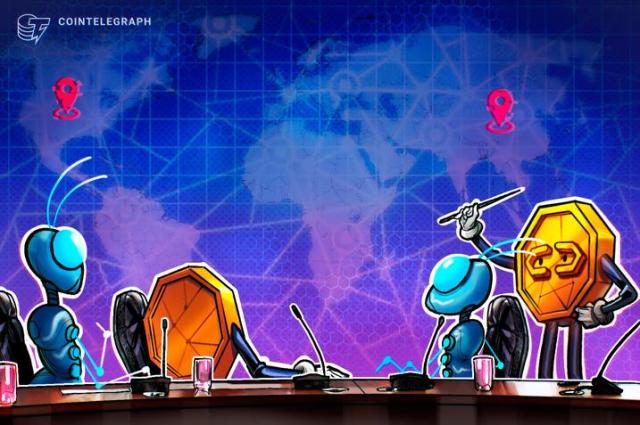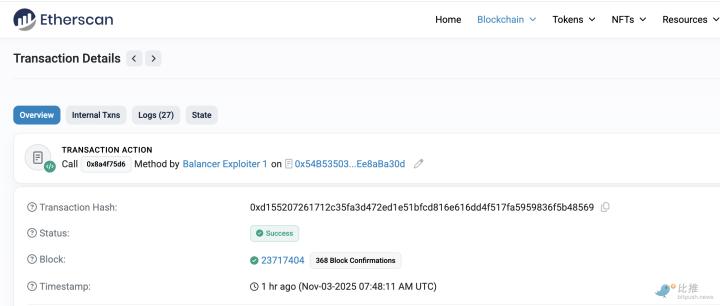Here , intelligent agents can not only transact on the blockchain, but also perform tasks in the real world; financing no longer relies on traditional venture capital, but is driven by a decentralized startup platform; robots no longer operate in isolation, but continuously learn human behavior through crowdsourced data.
This is not just a technological integration, but a restructuring of productivity. With Virtuals launching the ACP protocol, Butler trading assistant, Unicorn launch platform, and SeeSaw data acquisition system, we are witnessing the nascent form of an agency economy.
A future where humans, AI, and machines collaborate.
The following is the original text:
The trinity of technology
Robots, encryption, AI.
This is the technological trinity of our generation.
These three technologies represent the most disruptive forces of our time, and some even believe they may be the last major technological revolution for humanity. Therefore, Virtuals' integration of robots into its technological system is particularly noteworthy.
Why would they do that?
AI builders quickly realized that encryption and blockchain were the most efficient ways for agents to conduct transactions and operate online. Meanwhile, robotics developers understood that integrating AI into machines could create truly autonomous devices capable of executing instructions and performing real-world tasks.
These three elements form a mutually reinforcing symbiotic relationship. While they can exist independently—in other words, not all bots require encryption, and not all agents need bots—when combined, they create a complete closed loop.
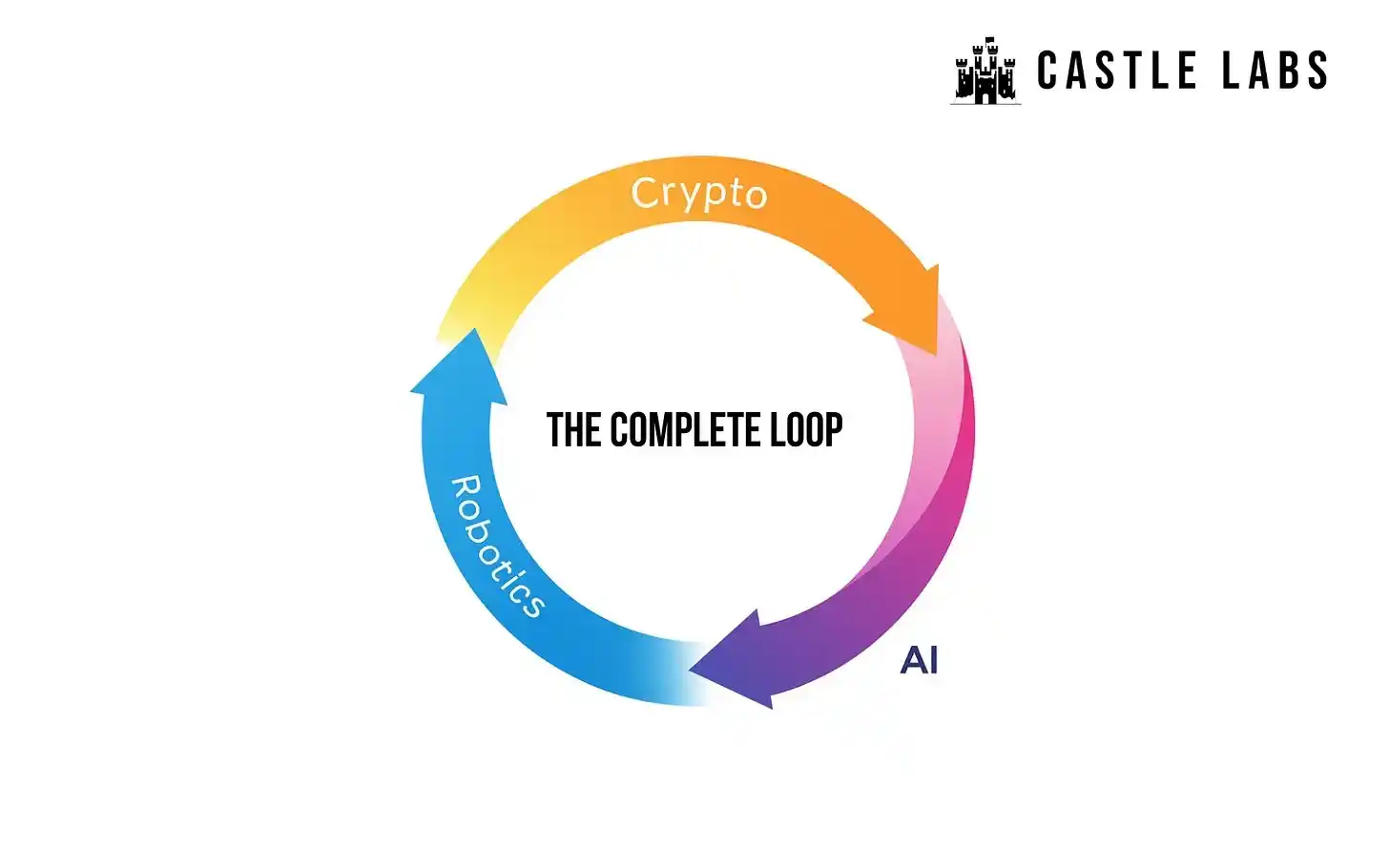
Blockchain can enable large-scale coordination of agents and bots, while providing payment infrastructure, whether for paying service fees or allowing DAOs to control a swarm of automated delivery drones.
AI empowers robots with reasoning and decision-making abilities without human intervention; while robots provide physical execution capabilities, enabling agents to interact with the real world.
This is a perfect technological symbiosis, which @Virtuals_io achieves by introducing what is called aGDP (proxy GDP).
GDP is defined as "the total output generated by the collaboration of humans, agents, and machines in the digital and physical realms".
When digital productivity is combined with robots that can operate in the real world, it becomes tangible, entering a physical realm that was previously inaccessible to agents.
Virtuals' three core products are: ACP, Butler, and Unicorn.
The following sections will introduce these products one by one and demonstrate how robots can be integrated into these core pillars.
ACP: Agent Commerce Protocol
As the name suggests, ACP is a protocol for transactions between agents, typically involving transactions, analysis, and research. Now, with the integration of robots, the application scenarios of ACP have become even more extensive.
Imagine this scenario: You are a real estate developer who needs to complete a construction project. You use a research agent, which hires a design agent to create blueprints. The research agent then hires a construction robot agent to lay the foundation for the property. The construction agent then hires a supply chain agent to procure building materials. All transactions are settled through ACP (Advanced Planning and Construction).
Although this sounds like a futuristic world, the possibilities are endless.
For example, a manufacturing agent might hire a fleet of delivery drones to deliver products directly to consumers' homes; or an agricultural agent might analyze weather data and hire robots to perform planting or irrigation tasks.
If you'd like to learn more, here's a screenshot of the ACP backend interface:

Recently, x402 has been gaining popularity. Below is a comparison between ACP and x402, and why Virtuals is well-positioned to capitalize on the growing trend of proxy capabilities.
Butler
Butler is the front-end interface for Virtuals' proxy economy system, allowing users to interact with autonomous agents built on the protocol.
Users can input their requests in X's chat interface, and Butler will recommend the most suitable proxy (or proxy cluster) to complete the task. After collecting the user's input, Butler will confirm the task's cost and deliverables, and then distribute the task.
The addition of robots will make this process more comprehensive. Users can send instructions to the agent via Butler, and the agent can then use the robot to perform these tasks in the real world.
Users can even operate and manage entire business projects solely through agents. Want to design T-shirts and apparel? There are dedicated design agents to handle it. Want to package these items and ship them to real users? There are bots to do it.
This opens the door to business management: anyone can submit a request or task, which will be completed by an agent or robot, without having to do it themselves.

Unicorn
Unicorn is the upgraded launch platform for Virtuals, designed to serve projects within the ecosystem and help developers and founders raise funds for their startups.
The old Genesis model eventually evolved into a "score-farming game," where users were more concerned with points than with supporting the real founders.
Virtuals stated that they have invested in several robotics projects through their venture capital arm and noted that without scalable funding mechanisms, innovation becomes slow and fragmented.
Today, with incentive mechanisms more aligned with the Unicorn model, bot and agent developers can more easily raise funds for their ambitious projects, such as:
A swarm of agricultural robots managed by intelligent agents can autonomously sow, monitor, and harvest crops, and optimize yields through predictive analytics;
A network of intelligent delivery drones can bid for delivery tasks and complete the delivery by land or air;
Automated construction robots coordinated by design agents and site planning agents.
Such a list of ideas can be extended indefinitely.
However, a crucial element is still missing: today's robots are not "out-of-the-box"; they don't have the ability to perform all tasks, and they need to be taught and trained. This is where SeeSaw comes in.
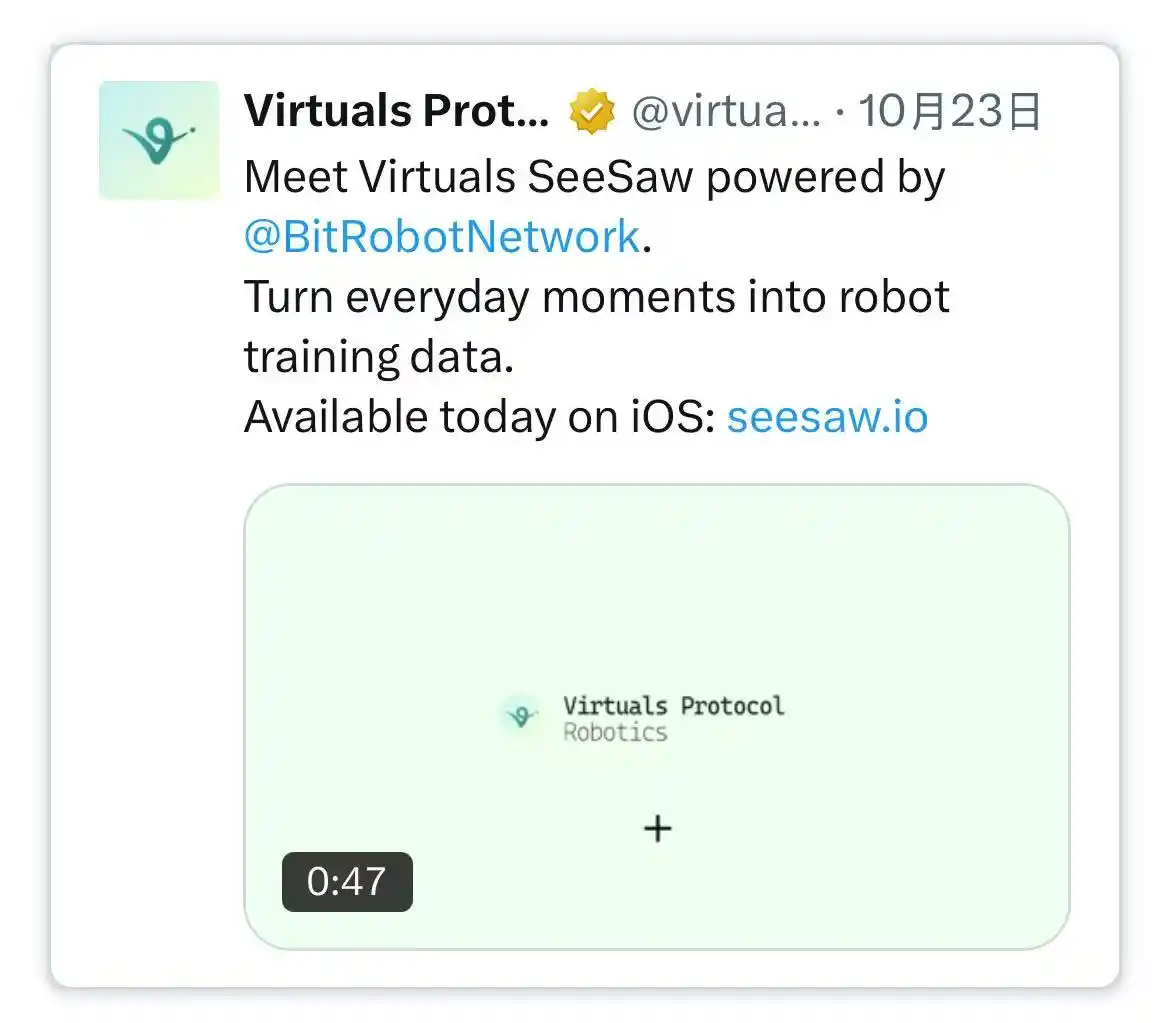
SeeSaw
For these robotic agents to operate efficiently in the real world, they require large-scale spatial datasets. This data can range from recognizing different types of alarm sounds to navigating a construction site, or even simple tasks like properly folding a shirt.
SeeSaw's role is to help robots better understand the world around them by having humans record daily activities and target tasks. These daily behaviors are then converted into data for the robot to learn from.
Robots inherently struggle to understand how objects and humans move in three-dimensional space. Therefore, collecting this motion data—no matter how subtle or complex—is crucial.
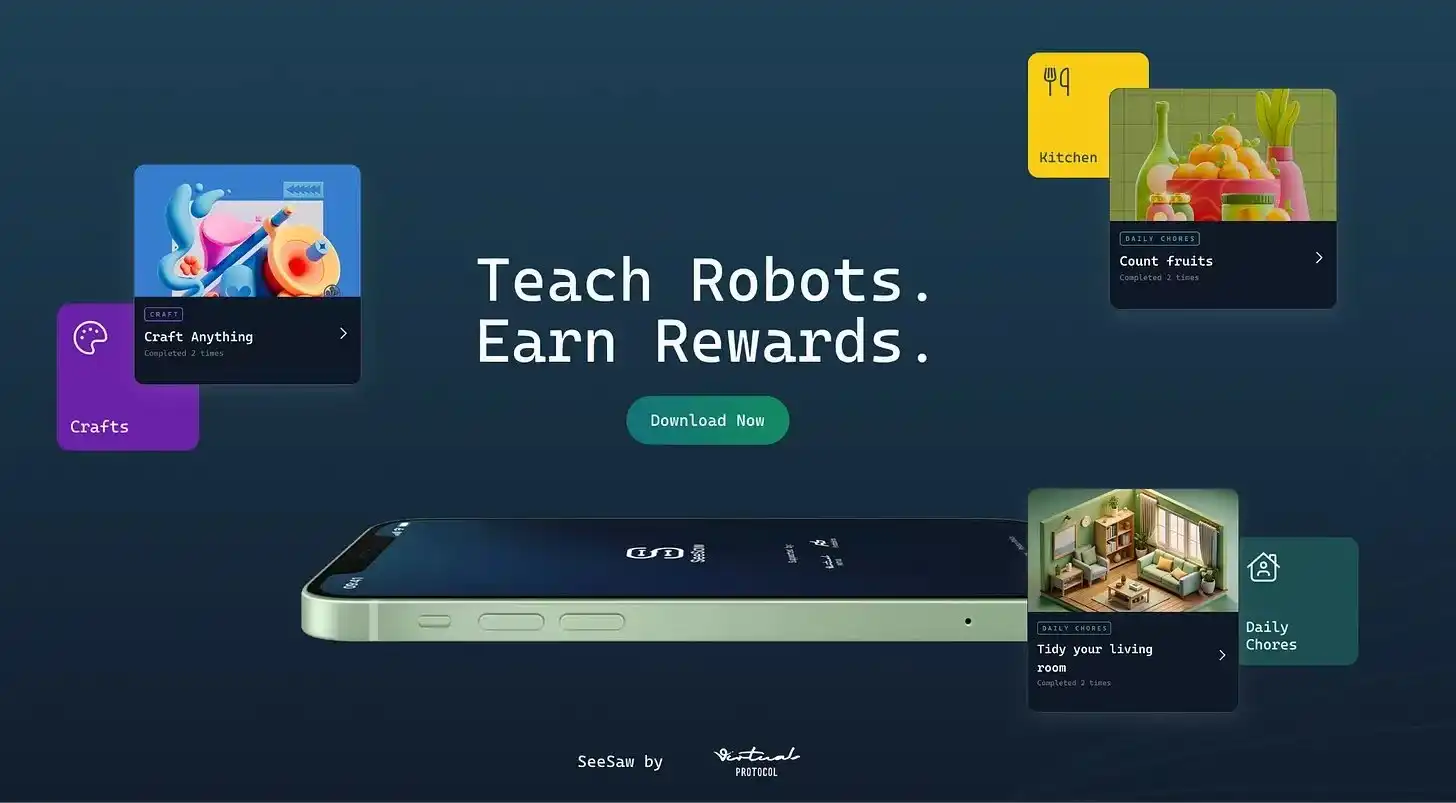
This is precisely why SeeSaw was created; Virtuals understands the importance of data collection.
SeeSaw is an iOS mobile video capture app that crowdsources videos of people interacting with objects. They gamify the process, allowing users to complete tasks and earn rewards.
As long as the reward mechanism matches the user's contribution, this system can be rapidly expanded to build a vast database of visual interactions for Virtuals, providing services to any team that needs to train robots.
SeeSaw was developed in collaboration with @BitRobotNetwork to ensure that the collected data meets quality standards and is suitable for large-scale robot training.
The future is here.
Although this article has come to an end, the story of the trinity of technology has only just begun.
These three areas are only just beginning to show their potential, and thanks to the openness of encryption technology, we are able to witness these developments at the forefront.
It's reasonable to expect that in the near future we will see institutions and companies entirely composed of robots. The prospect of robots automating tasks in reality is both fascinating and slightly awe-inspiring for all science fiction fans.
The future may arrive sooner than we imagine. Virtuals' exploration of the three-pronged approach to technology will undoubtedly yield results that deserve our continued attention.




